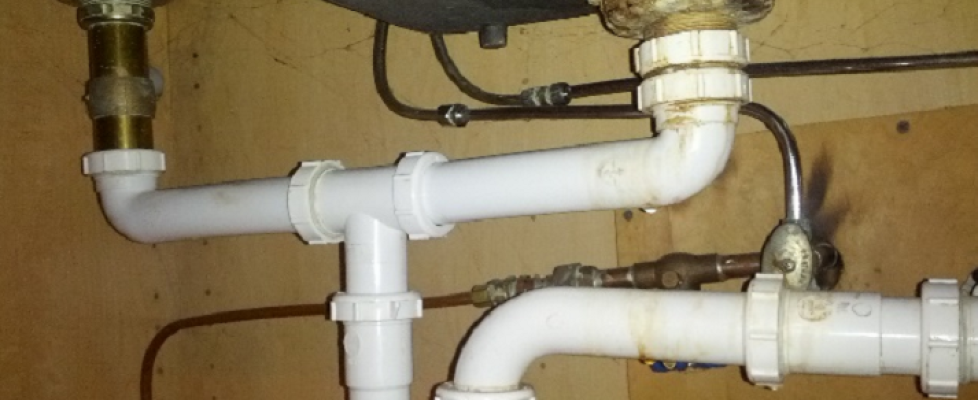Replacing Kitchen Sink Pipes
Replacing kitchen sink pipes might seem intimidating at first, but it’s a task you can tackle with a little patience and the right tools. Whether you’re dealing with kitchen sink pipes leaking or planning a renovation, understanding how to remove and install pipes under the kitchen sink can save you time, frustration, and money.
Here’s a step-by-step guide to help you replace those old, leaking pipes, even if you have limited plumbing experience.
Why Replace Kitchen Sink Pipes?
The most common reasons to replace kitchen sink drain pipes include leaks, corrosion, or a clogged sink that won’t drain properly. In some cases, even if your kitchen sink is not draining but pipes are clear, it might be due to the pipe alignment or damage, necessitating replacement.
Steps to Replace Kitchen Sink Pipes
Here are the key steps involved in replacing your kitchen sink pipes:
1. Gather Your Tools and Materials
Before getting started, make sure you have the following items ready:
- Adjustable pliers
- Hacksaw
- Bucket
- Tape measure
Having the right tools at hand will make the process smoother and quicker.
2. Turn Off Water Valves and Place a Bucket
First, turn off the water valves under your sink to avoid anyone accidentally turning on the water while you’re working. Then, place a bucket under the P-traps to catch any residual water when the pipes are disconnected.
3. Inspect and Measure the Existing Pipe Setup
Take a close look at the existing kitchen sink pipes to understand their alignment. Use a tape measure to get the exact dimensions of the pipes and fittings. If the pipes are misaligned or damaged, it’s essential to note this, as improper alignment can cause leaks even with new pipes.
4. Disconnect the P-Trap and Tailpieces
The P-trap is the curved part of the pipe that connects your sink’s drain to the main waste line. Use your hands to unscrew the nuts that hold the P-trap in place. If the nuts are too tight, you can use adjustable pliers to loosen them by turning counterclockwise. Once loose, remove the P-trap and let any water drain into the bucket.
If your sink has two basins, you may also have to disconnect a common tee that connects both P-traps to the waste pipe. For single sinks, this step won’t apply.
5. Remove the Old Tailpieces
The tailpieces are the vertical pipes that run from the sink drain to the P-trap. If they are corroded or too short, it’s a good idea to replace them as well. To remove them, use adjustable pliers to turn them counterclockwise and unscrew them.
6. Install the New Tailpieces
Next, screw in new tailpieces that are long enough to reach the drain pipes. These should extend far enough to allow the P-trap to be properly attached.
7. Cut New Pipes to Fit
Measure and cut the new pipes using a hacksaw to match the lengths of the old pipes. PVC pipes are ideal for this task because they are lightweight, affordable, and resistant to corrosion, making them perfect for kitchen sink drain pipes.
8. Assemble the Pipes Using Compression Fittings
Now, it’s time to assemble the new pipes. Use compression fittings to attach the new pipes and tailpieces, tightening the nuts by hand. Once everything is in place, attach the P-traps to the tailpieces and tighten the connections with your hands. If needed, use adjustable pliers to tighten any loose connections.
9. Test for Leaks
After completing the assembly, fill the sink with water and let it drain. Carefully check the connections for any leaks. If you find any leaking spots, tighten the connections further using adjustable pliers. Avoid using plumbing tape or pipe dope, as these won’t work with compression fittings and can worsen the leak.
Tips for a Smooth Installation
Here are some additional tips to keep in mind:
- Check the Alignment: Before tightening the
pipes, ensure the alignment is correct. If the pipes are slightly out of alignment, thecompression fittings won’t seal properly, and leaks may occur.
- Replace Corroded Tailpieces: If the tailpieces are corroded or too short, replace them. Installing new ones ensures a secure fit and helps prevent future leaks.
- Handle Garbage Disposal Connections: If one of your sinks has a garbage disposal, the P-trap connects the same way as it would to a regular tailpiece.
- Proper Drain Replacement: If you’re replacing the drain, make sure to use plumber’s putty around the strainer before screwing in the new lock nut. This ensures a watertight seal.
How to Unclog Kitchen Sink Pipes
If your kitchen sink is not draining but pipes are clear, it could be due to a blockage further down the waste line or issues with the venting system. In such cases, using a drain snake or consulting a plumber may be necessary to clear the obstruction. Regularly maintaining your pipes by avoiding putting grease, food scraps, and other debris down the sink can help prevent future clogs.
Conclusion
Replacing kitchen sink pipes may seem challenging at first, but by following these steps, you can complete the task with ease. Remember to ensure the correct alignment of the pipes and use proper fittings to prevent leaks. For the best results, PVC pipes are a great option for kitchen sink drain pipes due to their durability and resistance to corrosion.
If you experience persistent leaks or problems, it might be time to consult a professional plumber for help with more complex issues. By replacing your old, leaking pipes under the kitchen sink, you’ll not only prevent future water damage but also improve the overall efficiency of your plumbing system.
For expert assistance with how to replace pipes under the kitchen sink or any other plumbing issues, contact Super Brothers today.





